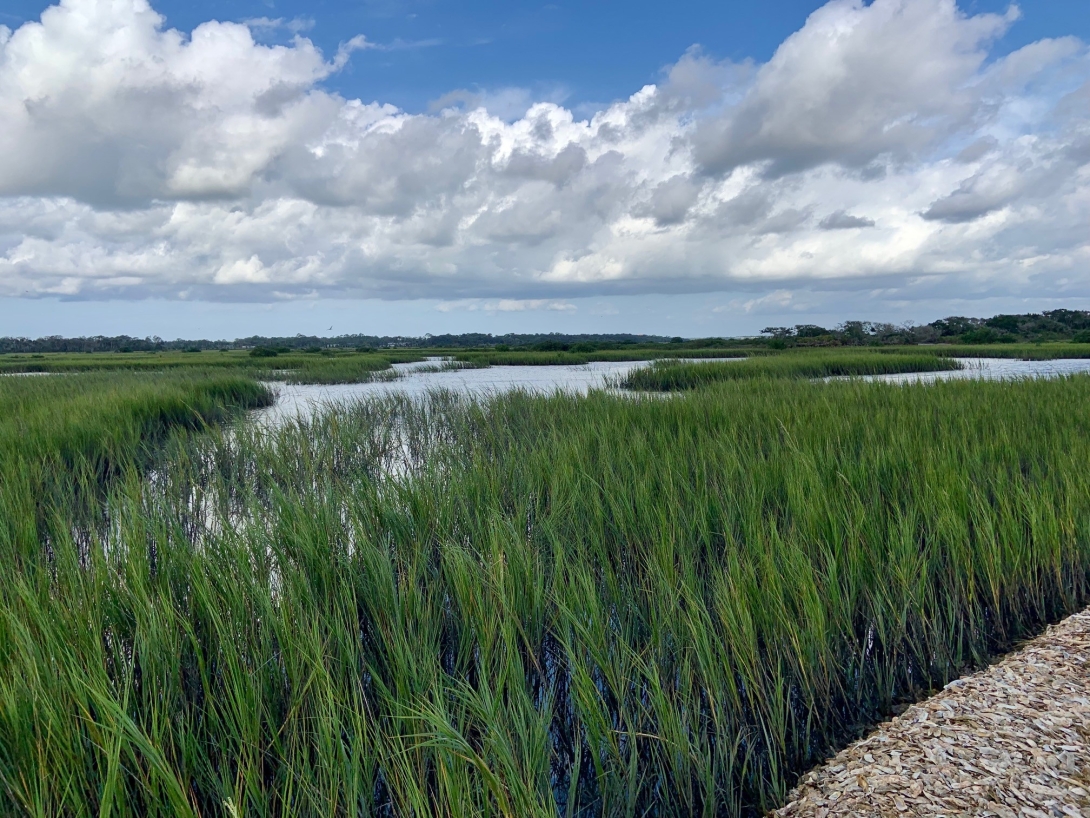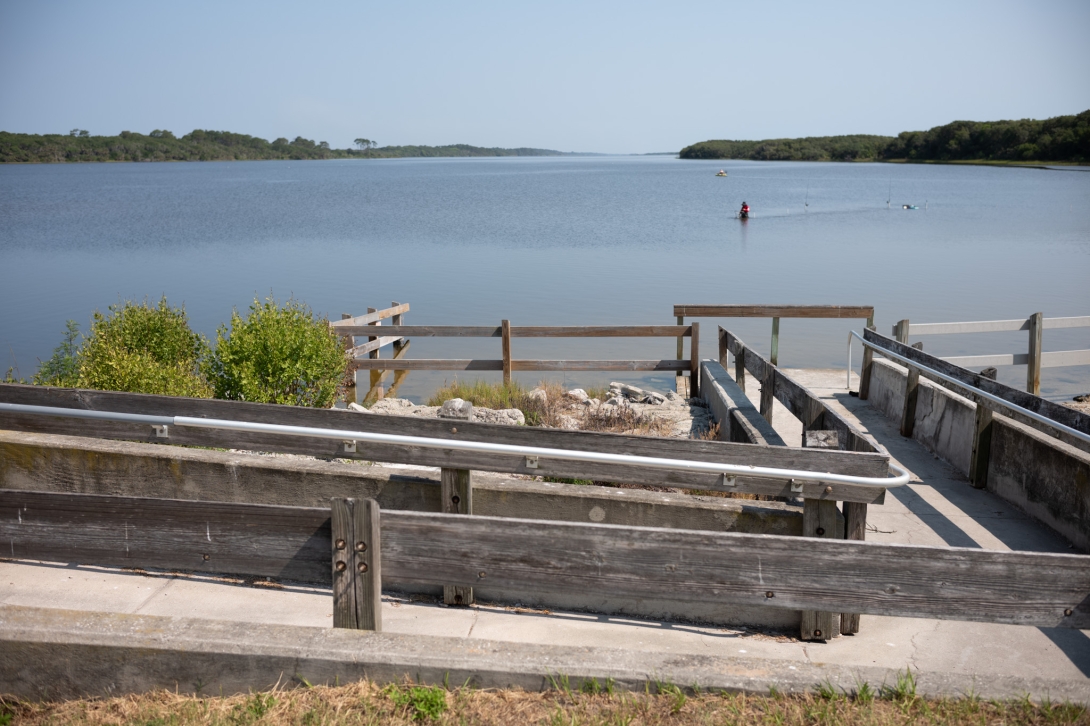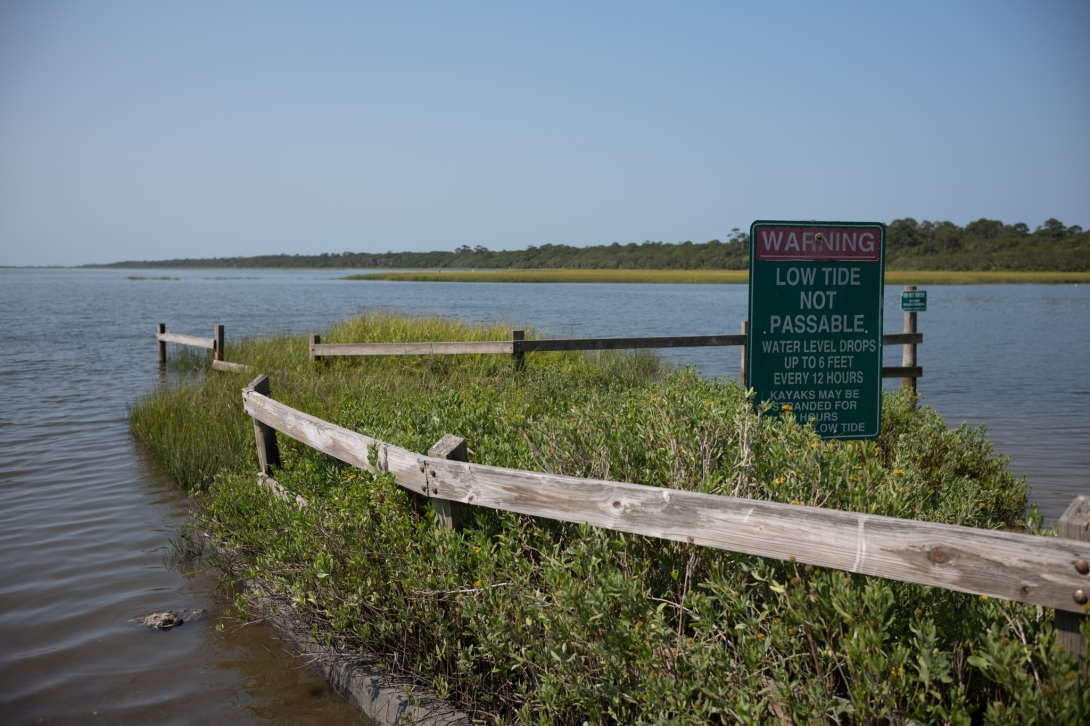Guana River Marsh Aquatic Preserve
NEWS | RESOURCES | CALENDAR
The Guana River Marsh Aquatic Preserve is situated on the northeast coast of Florida, nestled between Jacksonville and St. Augustine. The Guana Tolomato Matanzas National Estuarine Research Reserve (GTMNERR) Visitor Center, situated within the preserve, lies 10 miles north of St. Augustine.
St. Johns
1999
40,000
Bar-built estuary featuring a variety of habitats including salt marshes, a large artificial freshwater-to-brackish water lagoon, open ocean, a relatively undisturbed barrier island
Visitor Center: 9 a.m. to 4 p.m. Tuesday through Saturday. Closed on Sunday, Monday and state holidays
Guana Dam: 4 a.m. to 9 p.m., seven days a week
Guana Trails and Guana Beach Lots: 8 a.m. to sunset, seven days a week
Kayaking, birding, fishing
VISITATION INFORMATION
The Guana River Marsh Aquatic Preserve offers visitors a variety of ways to experience its natural beauty. The GTMNERR, which encompasses the preserve, has a visitor center located 10 miles north of St. Augustine on State Road A1A in Ponte Vedra Beach. The preserve provides four beach access areas to the Atlantic Ocean, parking and boat launch facilities for access to both Guana Lake and the Guana River. There is a 10-mile trail system on the Guana peninsula.
Parking
- $3 per vehicle up to eight people
Boat Access/Ramps
- Vilano Boat Ramp
- Usina Boat Ramp
- Palm Valley Boat Ramp
- Guana Dam (Guana River access limited by tides, Guana Lake access limited to 10HP Max)
- Florida Boat Ramp Finder
- Paddling Trails.
- FL Coastal Access Guide.
Facilities
The aquatic preserve offers no facilities, but please check each access location for a list of available facilities.
Contact
Matthew Bernanke
904-380-8629
Matthew.Bernanke@FloridaDEP.gov
HISTORY
In 1957, an earthen dam was constructed across the Guana River, resulting in the creation of Guana Lake. Recognizing the ecological significance of the area, the State of Florida acquired nearly 12,000 acres of the Guana Peninsula in 1984 for $48 million. This purchase, made through the Conservation and Recreation Lands and Save Our Coast Programs, aimed to protect the sensitive environment and its inhabitants, including endangered and threatened species. The Guana River Marsh Aquatic Preserve was officially designated in 1985. Later, the encompassing GTMNERR received its official designation on Aug. 19, 1999.

PUBLIC ENGAGEMENT OPPORTUNITIES
Volunteer Opportunities
The GTMNERR has a robust volunteer program that offers opportunities to participate in various activities, including:
- Education programs
- Biological surveys
- Water quality sampling
- Restoration activities
Visit the Friends of the GTM Research Reserve website for information on how to volunteer.
Events
- State of the Reserve (February)
- EstuaryFest
- EstuScary Haunted Trail
- Monthly interpretive hikes, family seining and beach cleanups (Friends of the GTM Research Reserve)

Educational Opportunities
The GTMNERR provides educational programs at the preserve, including on-site and off-site educational activities. The visitor center has interpretive exhibits including live animals. There are also kiosks located along the trails on the Guana Peninsula which provide information about the ecology and history of the peninsula. For an up-to-date list of guided educational activities, visit the Friends of the GTM Research Reserve website.

Conservation Efforts
Conservation efforts in the Guana River Marsh Aquatic Preserve focus on preserving biodiversity, maintaining water quality and restoring degraded habitats. The preserve's designation as Outstanding Florida Waters highlights the importance of protecting its water quality from pollution and other threats. The GTMNERR is engaged in habitat management practices like prescribed fire to maintain a balance of habitats for the vitality of myriad plant and animal species. The GTMNERR also works to control non-native invasive species that can disrupt the balance of the ecosystem. The acquisition of the uplands surrounding the preserve, particularly the 1984 purchase of the Guana Peninsula, the Guana Buffer Preserve, has been crucial in protecting the watershed and preventing development that could negatively impact the aquatic environment. These conservation efforts contribute to the long-term health and resilience of the preserve, ensuring its continued ecological, economic and recreational value for future generations.

Ongoing Research
The GTMNERR has an active research program that includes long-term monitoring of water quality, weather and coastal wetland vegetation. Research in the preserve has focused on a variety of topics, including plankton and oyster ecology, fish distribution, alligator habitat use and diet and sea level rise projections. Ongoing research is critical for understanding the complex interactions within the ecosystem and for informing management decisions that ensure the preserve's long-term health.
Partner Groups
The GTMNERR collaborates with a wide range of partner organizations to achieve its conservation and education goals. These partners include:
- National Oceanic and Atmospheric Administration
- U.S. Fish and Wildlife Service
- Florida Fish and Wildlife Conservation Commission
- St. Johns River Water Management District
- University of Florida
- University of North Florida
- Friends of the GTM Research Reserve
These partnerships are essential for leveraging resources, expertise and community support to effectively manage and protect the preserve.
Along with the Guana Buffer Preserve, the Guana River Marsh Aquatic Preserve serves as the hub and headquarters of the Guana Tolomato Matanzas National Estuarine Research Reserve (GTMNERR). The estuary and uplands of the Guana River has been a valued resource for centuries of human populations with many changes taking place over time.